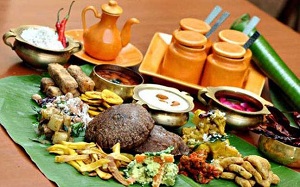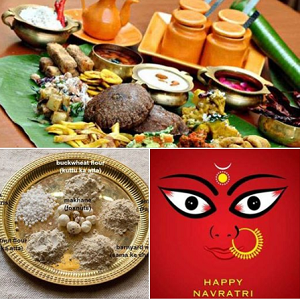Navratri Diet Tips:
Fasting during Navratri is supposed to invoke the power of Shakti in your body, which is the ultimate detox you can get.
You might believe, like a lot of young people do, that science and religious rituals just don’t gel well together in this day and age. But that’s not the case, especially where the ritual of fasting is concerned. The ritual fasts associated with most festivals might not seem as fancy as the Paleo diet, but their sole purpose is to purify or detoxify the body.
Don’t believe us? Just think about Navratri for instance. You might look at your relatives and wonder why they’re depriving themselves of good food, but take a closer look at that Navratri thali. The dishes cover every nutritional category you can think of.
The thing is, a fast like Navratri is quite the perfect mix of scientific and religious rituals in that one diet that you’re supposed to follow for nine days. And the tradition has been around since the Pauranic times. The first mention of Navratri comes from the Markandeya Purana, where it’s described how the nine forms of the Goddess Durga are to be worshipped in this period of time.
Navratri is celebrated twice–once during spring (vasant), and once during fall (sharadiya). This itself explains a lot about the diet. These are two major season changes, when our bodies become more vulnerable to diseases. A good diet is important to boost our immunity. So the ancient Indians ushered in the new seasons with a diet that would help them cope with the change.
The diet itself is endorsed by ayurveda, which explains that tamasic food items shouldn’t be consumed because they harm the body in the long run. On the other hand sattvik food is recommended for this period, which is extremely healthy. Now you might assume here, once again, that ayurveda doesn’t heal the body as fast as allopathy does.
While that might be true, ayurvedic recommendations do the same work naturally and allow your body to get used to the changes that it needs anyways. And, come to think of it, the constituents of the sattvik diet actually read like the very recommendations that modern dieticians and nutritionists make.
Take the traditional flours and grains that are a part of the Navratri diet–buckwheat (kuttu) flour, water chestnut (singhara) flour, amaranth (rajgira) flour, and millet (saame) flour. Did you know that these are all gluten-free, and recommended as healthier alternatives to wheat flour all over the world?
Rock salt, or sendha namak, which is the only salt one can use during Navratri, is good for your blood pressure and helps absorb minerals better than common salt. In fact, you’ll find that all the food items that make the body feel heavier, bloated, or induce acidity, are in the list of tamasic food: Onions, garlic, lentils and legumes, asafoetida (hing), mustard (sarson), fenugreek (methi), garam masala, alcohol, meat, poultry (chicken and eggs), coffee, and sunflower oil.
Sabudana khichdi is one of the traditional dishes prepared during Navratri. Picture courtesy: Instagram/meal swithmemories
The whole structure of the Navratri vrat or fast supports the idea of a healthy lifestyle, and, if followed porperly, it’s a good detox programme. Of course, if you end up having just potatoes, sago (sabudana) fritters, and deep fried stuff like pakoras and vadas, you’ll end up doing as much harm as the tamasic food items would do.
So this Navratri, be smart and go for a balanced and nutritious Navratri diet. Make sure your Navratri thali has a little of every dish you can rustle up so that you get all the goodness from the sattvik ingredients. And have lots of water, without which this nine-day detox will be incomplete.

Here are the ingredients you can depend on during this period:
• Water chestnut flour (singhare ka atta)
• Buckwheat flour (kuttu ka atta)
• Amaranth flour (rajgira ka atta)
• Barnyard millet (vrat ke chawal)
• Cumin (jeera)
• Black pepper (kali mirch)
• Rock salt (sendha namak)
• Green cardamom (ilaichi)
• Ginger (adrak)
• Green chilli (hari mirch)
• Lemon (nimbu)
• Mint leaves (pudina)
• Curry leaves, Potatoes
• Pumpkin (petha/kaddu)
• Sweet potato (shakarkandi)
• Raw banana, Bottle gourd (lauki)
• Cucumber (kheera)
• Sago (sabudana)
• Makhana, Dry fruits, All fruits
• Milk and milk products (paneer, curd, ghee, khoya)
• Sugar, Honey, Jaggery (gur)
• Coconut, Groundnut oil

